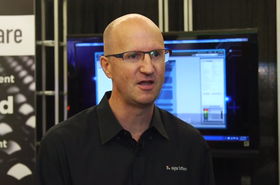Even though we have seen the back of Halloween, it doesn’t mean one of the scariest days for data center managers isn’t still around the corner – the day the auditor comes knockin’.
The landscape is changing. While of course audits have and always will take place, never before have software vendors been so aggressive in shaking down their clients. This is because as budgets get squeezed further they are looking at current revenue streams and seeing how much profit can be extracted from them.
This means that their clients will be facing not only more audits – but more ferocious and intensive ones. But what does this mean for data center managers when their estate is put under a microscope?
Hard to keep track
Data center managers don’t have an easy time of it. They are tasked with keeping the bedrock of the organization safe and – most importantly – reliable. This is so the lifeblood of the modern digitally-driven business, data and business applications, can be called upon any time of the day to deliver the expected business or customer value. Now, if this wasn’t hard enough, the data center manager needs to be totally on top of compliance to the moment when hardware and software is added or removed in line with the company’s growth or changing circumstances.
Keeping track of these additional pieces of hardware and software instances can be taxing, especially if the data center manager uses Excel – or even worse: Paper and pen. And furthermore, the software attributed to these pieces of hardware also has to be tracked. If not, organizations could be spending too much on too many licences and losing money - or being under-licensed and facing hefty fines from providers in a true-up.
Automate the process
Although data center managers have historically been brought up on Excel to keep track of all their hardware, there is a better solution – SAM. SAM stands for software asset management and is the practice of managing and optimizing, buying, distributing, maintaining, using and the disposal of software applications.
This moves the data center manager into the 21st century with automated systems and processes to track software licenses in a digital environment.
Unfortunately, SAM is often seen as a luxury item, not a ‘must have’. This is because C-suite decision makers don’t immediately see the benefit, but when the auditor’s letter lands on the doormat, it becomes a pressing concern.
Typically, Oracle gives partners a 45-day notice period [for an audit] while Microsoft gives a 30-day period. In that time it is all but impossible to conduct an audit with existing personnel and resources without a solution in place to make the process a breeze. But, if organizations somehow manage to pull a rabbit out of a hat and make the deadline, what of the man hours lost in doing so? It is highly doubtful organizations can foot the expense. Certainly not if multiple vendors come knocking in a short space of time.
The benefits of SAM
With SAM, organizations don’t have to worry about wasted man power, quite the contrary. SAM brings optimization and automation to the center of the process and give time back to all concerned. The solution is able to organize the use of each and every licence across a plethora of devices, locations, and even regions to understand exactly what is being used, how, and by whom.
Once this internal audit has been run, not only can the information be recorded for software providers, but also show where cost savings can be made from over-bought and under-used licenses.
In this same vein it is also possible to prevent the misuse and over-use of software once a colleague or team leave the company. If licences are still tracked manually there is a chance this would be missed. But not with a SAM solution.
Time for SAM to do the work
A mandatory, provider-decided software audit can cause serious disruption to any organization. It takes away considerable time and resources from what could already be an organization pushed to the max on daily delivery.
It’s impossible to avoid an audit and just as hard to run the audit with rudimentary tools in the time frames given for a reasonably mature and complex organization. However, preparation and planning can make the audit process so much simpler. Using a reliable SAM solution puts all software information used at the data center manager’s fingertips. It allows informed choices to be made and more cost-effective decisions to be cast. But most importantly, it avoids the chances of making enemies of life long partners – or the CFO.





